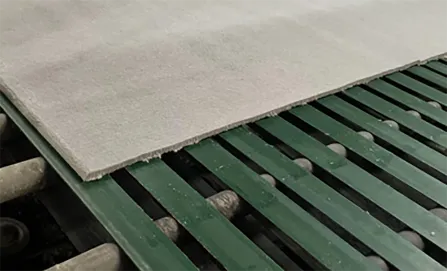- Afrikaans
- Albanian
- Amharic
- Arabic
- Armenian
- Azerbaijani
- Basque
- Belarusian
- Bengali
- Bosnian
- Bulgarian
- Catalan
- Cebuano
- Corsican
- Croatian
- Czech
- Danish
- Dutch
- English
- Esperanto
- Estonian
- French
- German
- Greek
- Hindi
- Indonesian
- irish
- Italian
- Japanese
- Korean
- Lao
- Malay
- Myanmar
- Norwegian
- Norwegian
- Polish
- Portuguese
- Romanian
- Russian
- Serbian
- Spanish
- Swedish
- Thai
- Turkish
- Ukrainian
- Uzbek
- Vietnamese
Դկտ . 04, 2024 13:48 Back to list
Comparison of Gypsum and PVC Ceilings Key Differences Explained
The Difference Between Gypsum and PVC Ceiling A Comprehensive Overview
When it comes to home and commercial building interiors, ceiling materials play a crucial role in aesthetics, functionality, and overall comfort. Two popular choices in ceiling design are gypsum and PVC (polyvinyl chloride) ceilings. While both materials serve similar purposes, they differ significantly in various aspects. This article explores the differences between gypsum and PVC ceilings, helping you make an informed decision based on your specific needs.
Material Composition
Gypsum ceilings are primarily made from gypsum board, which is a type of plasterboard composed of a gypsum core sandwiched between two layers of thick paper. This material is known for its fire-resistant properties and excellent acoustic performance, making it a popular choice in buildings where sound insulation and safety are paramount.
On the other hand, PVC ceilings are made from synthetic polymer materials. PVC is lightweight, flexible, and water-resistant, making it an ideal choice for spaces that require durability and easy maintenance, such as bathrooms and kitchens. The chemical composition of PVC allows it to resist mold and mildew, which can be beneficial in humid environments.
Aesthetic Appeal
When it comes to aesthetics, both gypsum and PVC ceilings offer a wide range of design possibilities. Gypsum ceilings can be designed with intricate patterns, textures, and colors, allowing for a more elegant and sophisticated look. They can be painted and customized to fit any interior décor style, making them versatile for residential and commercial applications.
Conversely, PVC ceilings are available in various designs, including glossy finishes and textured surfaces that mimic the appearance of wood or stone. They are often used in modern interior designs due to their sleek look and easy installation. However, while PVC ceilings provide a contemporary feel, they may lack the timeless elegance that gypsum can offer.
Installation Process
The installation process for gypsum and PVC ceilings varies significantly. Gypsum ceilings require a more complex installation procedure that involves framing, anchoring, and finishing. It is typically recommended to hire professionals for gypsum ceiling installation, as it requires particular expertise to ensure a flawless finish. The process can be labor-intensive, leading to a longer installation time.
In contrast, PVC ceilings are known for their straightforward installation. They can be easily mounted onto existing ceilings or structures with minimal tools. Many homeowners opt for DIY installation, as PVC ceiling panels often come with interlocking features, allowing for quick assembly. This ease of installation can reduce labor costs and time significantly.
difference between gypsum and pvc ceiling

Maintenance and Durability
Durability is another crucial factor to consider when comparing gypsum and PVC ceilings. Gypsum ceilings are relatively sturdy but can be vulnerable to moisture. In areas with high humidity or potential water exposure, gypsum can become damaged and may require repair or replacement.
On the other hand, PVC ceilings excel in moisture-prone areas due to their water-resistant properties. They can withstand humidity without warping or degrading, making them ideal for bathrooms, kitchens, and other damp environments. Additionally, PVC ceilings are easy to clean and maintain, requiring only a damp cloth for routine cleaning.
Cost Considerations
Cost is always an important factor in any renovation project. Generally, gypsum ceilings tend to be more expensive than PVC ceilings when you factor in materials and installation costs. The need for professional installation can add to the overall expense. However, gypsum may offer better long-term value in terms of aesthetics and property value due to its perceived upscale quality.
PVC ceilings, while more budget-friendly, can provide significant savings in installation costs due to their ease of setup. Additionally, their durability in moisture-prone areas can lead to lower maintenance costs over time.
Conclusion
In summary, the choice between gypsum and PVC ceilings largely depends on your individual needs, preferences, and budget. Gypsum ceilings offer excellent aesthetics, sound insulation, and fire resistance, making them suitable for various interior designs. However, they require careful installation and maintenance.
PVC ceilings, on the other hand, provide great flexibility, durability, and ease of installation, especially in humid areas. While they may not match the elegance of gypsum, their low maintenance requirements and cost-effectiveness make them an appealing choice for many homeowners and businesses.
Ultimately, understanding the key differences between these two ceiling materials can help you choose the one that best aligns with your project goals and personal preferences.
-
Transform Interiors with PVC Gypsum Ceiling: A Stylish, Durable, and Moisture-Resistant SolutionNewsMay.19,2025
-
The Smart Interior Upgrade: Discover the Durability and Versatility of Gypsum Ceiling Access Panel SolutionsNewsMay.19,2025
-
The Smart Choice for Interior Design: Discover the Value of PVC Gypsum Ceiling SolutionsNewsMay.19,2025
-
Mineral Fiber Ceiling Tiles: The Smart Blend of Performance and AestheticsNewsMay.19,2025
-
Mineral Fiber Ceiling Tiles: The Superior Choice Over Gypsum for Sound and Fire SafetyNewsMay.19,2025
-
Mineral Fiber Ceiling Tiles: Eco-Friendly Strength and Style for Every CeilingNewsMay.19,2025







